littleBits Smart Home Kit Review
This yr's Consumer Electronics Show was largely dominated by home automation and the Internet of Things, a concept in which nigh every aspect of your home – from your front door and java maker to your thermostat and dryer – is automated and / or connected to the Net. Or in other words, nearly everything we saw in The Jetsons is a reality today.
Retrofitting an existing habitation with all of these peachy new IoT gadgets, as you can imagine, isn't exactly cheap. A Nest Learning Thermostat, for case, will run you $250 while connected appliances such as a fridge tin can ready you lot back up of $3,000.
Civilities like being able to remotely adjust the temperature inside your home or receiving a text when the laundry is done certainly sound appealing, but are they actually all they're croaky upwards to exist? Wouldn't it be squeamish if you lot could but try these features out for a week or two earlier committing to shelling out hundreds or thousands on a standalone IoT-enabled device?
With littleBits' new Smart Home Kit, you tin do just that.
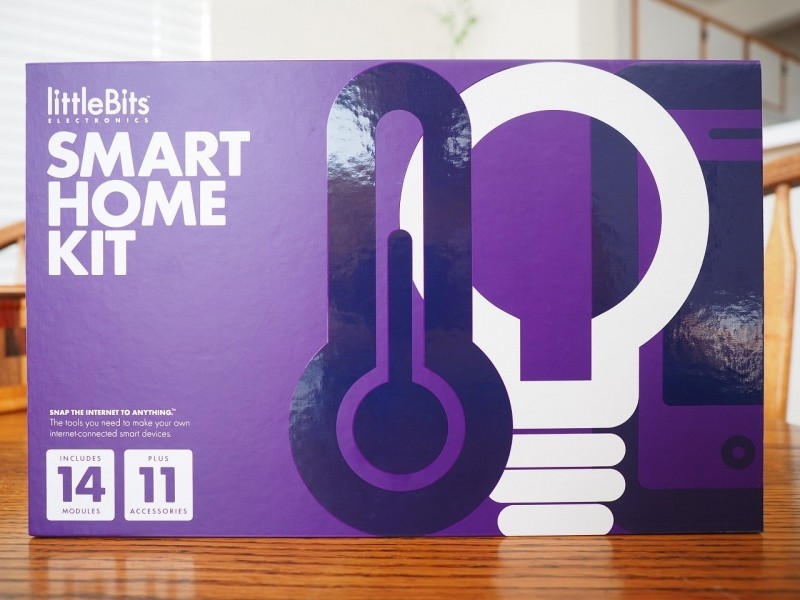
For the uninitiated among usa, littleBits is an ever-growing open source library of small electronic modules that easily connect together. Created by Ayah Bdeir, it started as a tool to assistance designers incorporate electronics into the prototyping process. Today, it'due south much more than that. Think of them equally Lego bricks for the iPad generation.
The Smart Abode Kit we'll be looking at today is tailor-made for domicile automation projects. It includes 14 modules and 11 accessories, enabling a vast assortment of creations that can add smart functionality to all sorts of appliances and gadgets y'all already ain, or create entirely new ones.
The simplicity of littleBits is perhaps its biggest selling point. It is light years in a higher place the old mode of edifice electronics, breadboarding, every bit there is no soldering involved – everything simply snaps together with magnets. What'southward more, a background in electrical engineering isn't a prerequisite which makes it ideal for newcomers of well-nigh any age.
First Look
The littleBits Smart Abode Kit is packaged in a high-quality box that doubles as its storage container consummate with magnetic hat. Inside, you'll observe each of the xiv modules in its ain bay as well equally the Air-conditioning Switch. Beneath the master tray is a box containing the USB power adapter, two mounting boards, a microSD adapter, a pair of plastic screwdrivers and six adhesive shoes.


The kit indicates I was also supposed to receive a gear up of servo accessories but they were nowhere to be found. I can only presume that, with this existence a review sample, they simply got left out by accident by the final reviewer.
The modules that come in the Smart Habitation Kit include the synth speaker, IR transmitter, bright LED, number, temperature sensor, threshold, button, sound trigger, light sensor, MP3 player, USB ability, cloudBit, two-way divide and a servo.
Modules in Detail
As you can see, all of the modules feature an attractive white PCB with piece of cake-to-read descriptions printed right on the board. And unlike something yous might build on your ain, all of the circuits wait professionally-fabricated and nothing feels cheap or shoddy.
Modules are color-coded into one of iv categories for easy recognition. Everything starts with a blue module which supplies the ability necessary to go you up and running. Pink modules represent inputs and include things like buttons, switches and sensors. They act equally they eyes and ears of whatever you build.
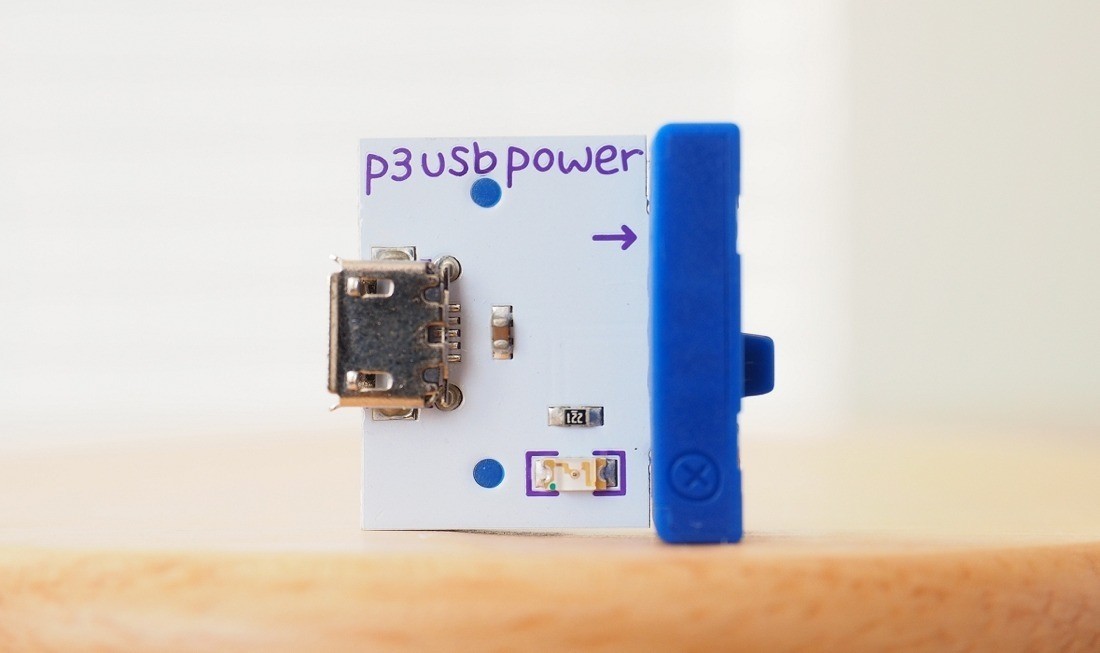
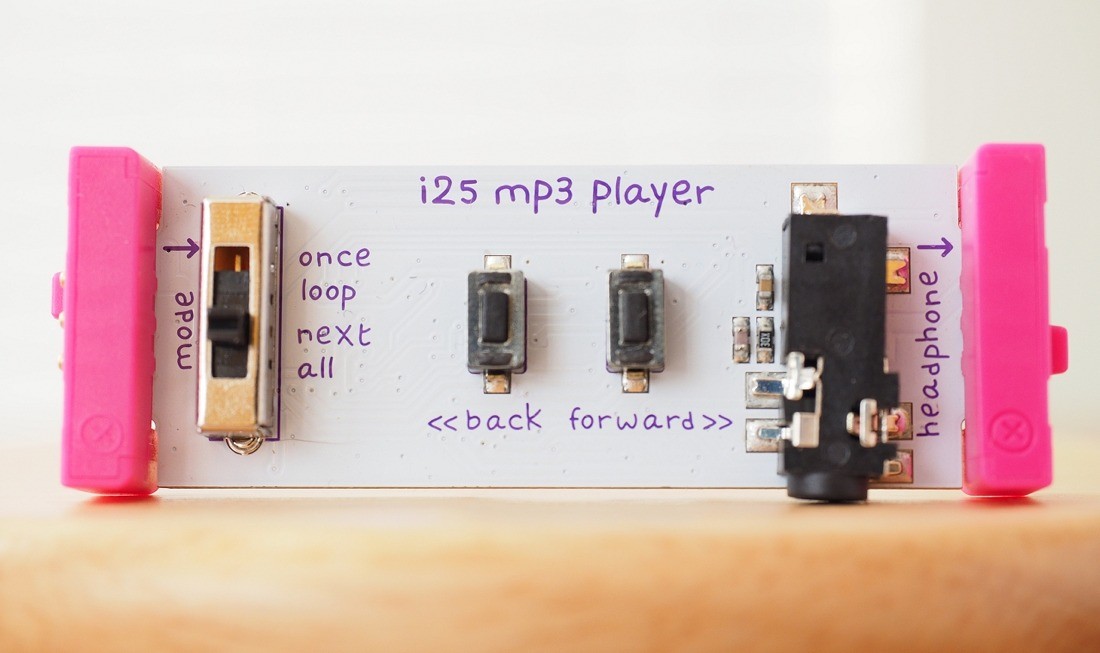
Orangish modules fall into the wire category. These modules help yous extend a project, branch it out, change directions or add together wireless capabilities to your project. Terminal but not least are the green modules, the outputs. Consisting of lights, motors, audio and more, these are the bits that mostly make things happen.
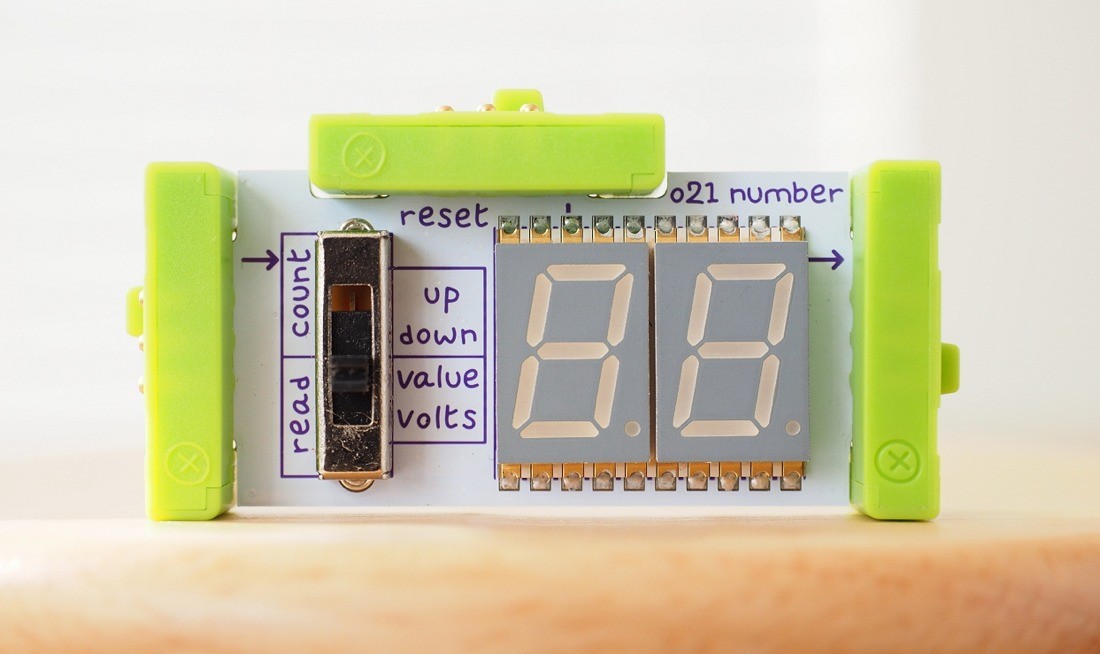

While most modules are self-explanatory, i module in particular – the threshold – left me scratching my head as to its verbal purpose. That'south where littleBits' website came in extremely handy. The site features a general description and geek speak (a full technical breakdown) on each module and oftentimes times, yous also become a YouTube video that goes into fifty-fifty more than detail.
A description of each included module tin also be found in the included quick get-go guide; I simply missed this initially.
Building with littleBits
I'g not the most creative person in the world. Fortunately, you lot don't take to be to use littleBits. Building functional projects is then easy, a child could do information technology. In fact, that'southward one of their key demographics but we'll get to that in a bit. For now, it's fourth dimension to create something smart.
Post-obit along in the quick start guide, I was encouraged to build my get-go circuit. It consisted of a USB ability module, the push button module and the bright LED module. Inside seconds, I'd created my beginning projection equally the modules but snapped together. Making sure the USB cable was fastened to the power adapter and plugged into the wall, I pressed the button on the module button and voila, the LED lit correct up -- extremely bright, might I add.
Moving right forth, I congenital a thermometer using the USB ability module, the temperature sensor module and the number module. On the number module, I made sure to set the adaptable switch to "value" and sure enough, an accurate temperature reading was displayed on information technology.
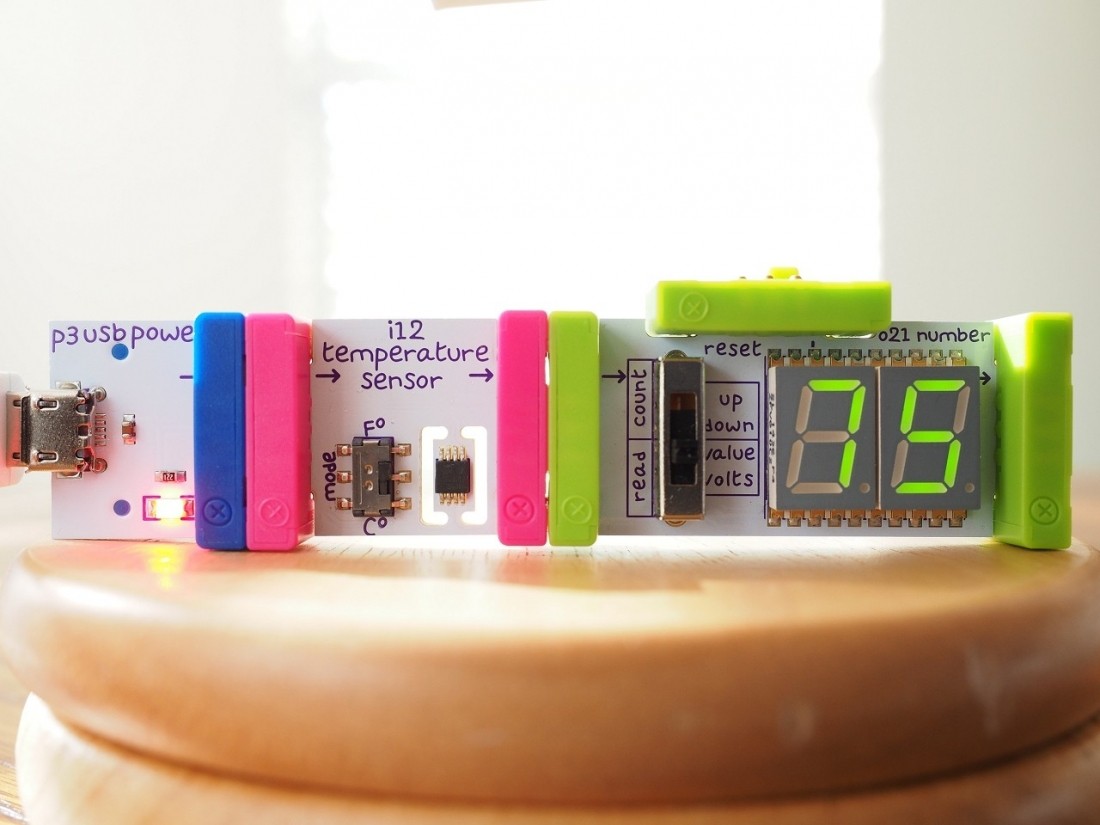
I then synthetic an MP3 actor which consisted of the USB power module, the button module and the MP3 player. I could take stopped here and used a set of headphones but I elected to add the synth speaker module to test its quality.
On the dorsum of the MP3 module is a slot for a microSD bill of fare (a 4GB menu is included). Beforehand, I used the SD card adapter to load a few tracks onto the microSD card.
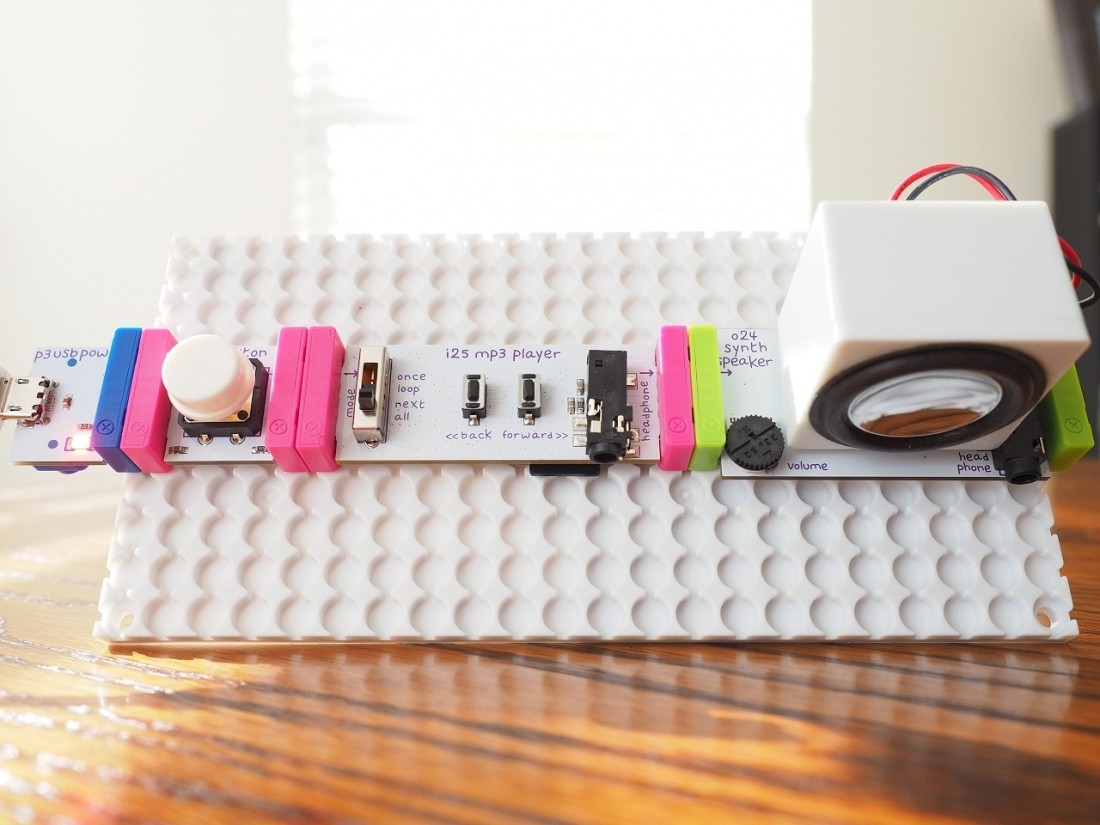
Pressing the button once starts playback while pressing the forward or backwards button skips a track or goes dorsum to the previous track as y'all'd wait. A dial on the synth speaker module controls the volume level and equally I discovered, y'all tin can add 12dB of gain by simultaneously pressing the back and forward buttons.
The sound quality actually wasn't likewise bad from the synth speaker, all things considered. I tried the headphone jack and once again, I was pretty impressed with what I heard. It's no match for a decent standalone MP3 player, your estimator or a smartphone / tablet, but it gets the job done.
Source: https://www.techspot.com/review/947-littlebits-smart-home-kit/
Posted by: bandyberful.blogspot.com


0 Response to "littleBits Smart Home Kit Review"
Post a Comment